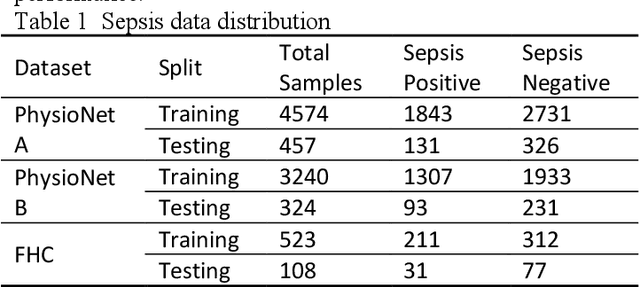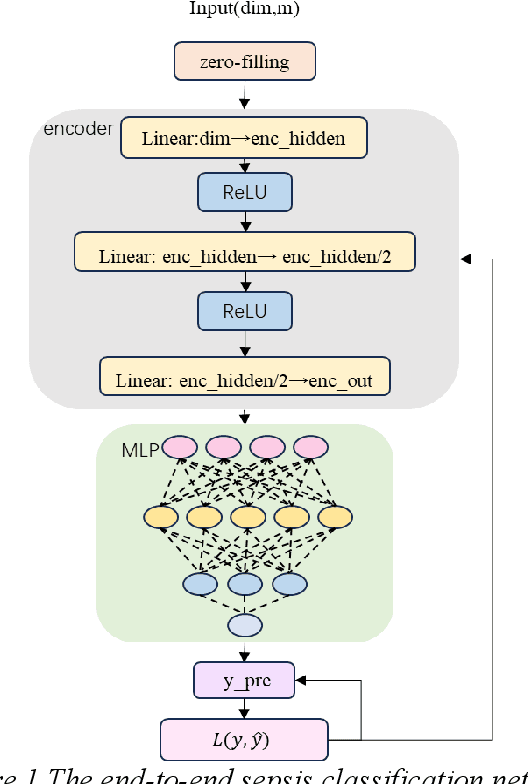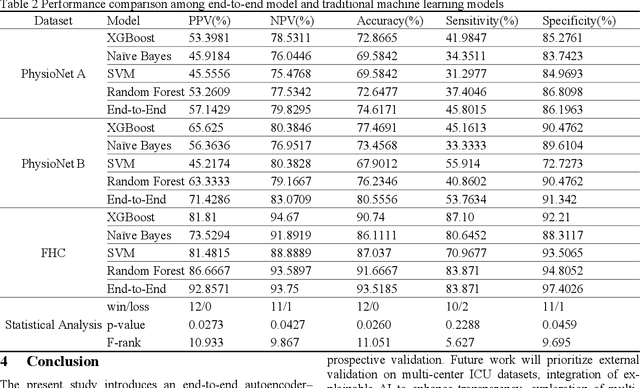Xiang Liu
Fuzzy Reasoning Chain (FRC): An Innovative Reasoning Framework from Fuzziness to Clarity
Sep 26, 2025Abstract:With the rapid advancement of large language models (LLMs), natural language processing (NLP) has achieved remarkable progress. Nonetheless, significant challenges remain in handling texts with ambiguity, polysemy, or uncertainty. We introduce the Fuzzy Reasoning Chain (FRC) framework, which integrates LLM semantic priors with continuous fuzzy membership degrees, creating an explicit interaction between probability-based reasoning and fuzzy membership reasoning. This transition allows ambiguous inputs to be gradually transformed into clear and interpretable decisions while capturing conflicting or uncertain signals that traditional probability-based methods cannot. We validate FRC on sentiment analysis tasks, where both theoretical analysis and empirical results show that it ensures stable reasoning and facilitates knowledge transfer across different model scales. These findings indicate that FRC provides a general mechanism for managing subtle and ambiguous expressions with improved interpretability and robustness.
Hierarchical Deep Fusion Framework for Multi-dimensional Facial Forgery Detection -- The 2024 Global Deepfake Image Detection Challenge
Sep 16, 2025Abstract:The proliferation of sophisticated deepfake technology poses significant challenges to digital security and authenticity. Detecting these forgeries, especially across a wide spectrum of manipulation techniques, requires robust and generalized models. This paper introduces the Hierarchical Deep Fusion Framework (HDFF), an ensemble-based deep learning architecture designed for high-performance facial forgery detection. Our framework integrates four diverse pre-trained sub-models, Swin-MLP, CoAtNet, EfficientNetV2, and DaViT, which are meticulously fine-tuned through a multi-stage process on the MultiFFDI dataset. By concatenating the feature representations from these specialized models and training a final classifier layer, HDFF effectively leverages their collective strengths. This approach achieved a final score of 0.96852 on the competition's private leaderboard, securing the 20th position out of 184 teams, demonstrating the efficacy of hierarchical fusion for complex image classification tasks.
End to End Autoencoder MLP Framework for Sepsis Prediction
Aug 26, 2025


Abstract:Sepsis is a life threatening condition that requires timely detection in intensive care settings. Traditional machine learning approaches, including Naive Bayes, Support Vector Machine (SVM), Random Forest, and XGBoost, often rely on manual feature engineering and struggle with irregular, incomplete time-series data commonly present in electronic health records. We introduce an end-to-end deep learning framework integrating an unsupervised autoencoder for automatic feature extraction with a multilayer perceptron classifier for binary sepsis risk prediction. To enhance clinical applicability, we implement a customized down sampling strategy that extracts high information density segments during training and a non-overlapping dynamic sliding window mechanism for real-time inference. Preprocessed time series data are represented as fixed dimension vectors with explicit missingness indicators, mitigating bias and noise. We validate our approach on three ICU cohorts. Our end-to-end model achieves accuracies of 74.6 percent, 80.6 percent, and 93.5 percent, respectively, consistently outperforming traditional machine learning baselines. These results demonstrate the framework's superior robustness, generalizability, and clinical utility for early sepsis detection across heterogeneous ICU environments.
Hypernetworks for Model-Heterogeneous Personalized Federated Learning
Jul 30, 2025Abstract:Recent advances in personalized federated learning have focused on addressing client model heterogeneity. However, most existing methods still require external data, rely on model decoupling, or adopt partial learning strategies, which can limit their practicality and scalability. In this paper, we revisit hypernetwork-based methods and leverage their strong generalization capabilities to design a simple yet effective framework for heterogeneous personalized federated learning. Specifically, we propose MH-pFedHN, which leverages a server-side hypernetwork that takes client-specific embedding vectors as input and outputs personalized parameters tailored to each client's heterogeneous model. To promote knowledge sharing and reduce computation, we introduce a multi-head structure within the hypernetwork, allowing clients with similar model sizes to share heads. Furthermore, we further propose MH-pFedHNGD, which integrates an optional lightweight global model to improve generalization. Our framework does not rely on external datasets and does not require disclosure of client model architectures, thereby offering enhanced privacy and flexibility. Extensive experiments on multiple benchmarks and model settings demonstrate that our approach achieves competitive accuracy, strong generalization, and serves as a robust baseline for future research in model-heterogeneous personalized federated learning.
AnTKV: Anchor Token-Aware Sub-Bit Vector Quantization for KV Cache in Large Language Models
Jun 24, 2025Abstract:Quantization has emerged as an effective and lightweight solution to reduce the memory footprint of the KV cache in Large Language Models (LLMs). Nevertheless, minimizing the performance degradation caused by ultra-low-bit KV cache quantization remains a significant challenge. We observe that quantizing the KV cache of different tokens has varying impacts on the quality of attention outputs. To systematically investigate this phenomenon, we perform forward error propagation analysis on attention and propose the Anchor Score (AnS) that quantifies the sensitivity of each token's KV cache to quantization-induced error. Our analysis reveals significant disparities in AnS across tokens, suggesting that preserving a small subset with full precision (FP16) of high-AnS tokens can greatly mitigate accuracy loss in aggressive quantization scenarios. Based on this insight, we introduce AnTKV, a novel framework that leverages Anchor Token-aware Vector Quantization to compress the KV cache. Furthermore, to support efficient deployment, we design and develop a triton kernel that is fully compatible with FlashAttention, enabling fast online Anchor Token selection. AnTKV enables LLaMA-3-8B to handle context lengths up to 840K tokens on a single 80GB A100 GPU, while achieving up to 3.5x higher decoding throughput compared to the FP16 baseline. Our experiment results demonstrate that AnTKV matches or outperforms prior works such as KIVI, SKVQ, KVQuant, and CQ under 4-bit settings. More importantly, AnTKV achieves significantly lower perplexity under ultra-low-bit quantization on Mistral-7B, with only 6.32 at 1-bit and 8.87 at 0.375-bit, compared to the FP16 baseline of 4.73.
Combining Self-attention and Dilation Convolutional for Semantic Segmentation of Coal Maceral Groups
Jun 15, 2025Abstract:The segmentation of coal maceral groups can be described as a semantic segmentation process of coal maceral group images, which is of great significance for studying the chemical properties of coal. Generally, existing semantic segmentation models of coal maceral groups use the method of stacking parameters to achieve higher accuracy. It leads to increased computational requirements and impacts model training efficiency. At the same time, due to the professionalism and diversity of coal maceral group images sampling, obtaining the number of samples for model training requires a long time and professional personnel operation. To address these issues, We have innovatively developed an IoT-based DA-VIT parallel network model. By utilizing this model, we can continuously broaden the dataset through IoT and achieving sustained improvement in the accuracy of coal maceral groups segmentation. Besides, we decouple the parallel network from the backbone network to ensure the normal using of the backbone network during model data updates. Secondly, DCSA mechanism of DA-VIT is introduced to enhance the local feature information of coal microscopic images. This DCSA can decompose the large kernels of convolutional attention into multiple scales and reduce 81.18% of parameters.Finally, we performed the contrast experiment and ablation experiment between DA-VIT and state-of-the-art methods at lots of evaluation metrics. Experimental results show that DA-VIT-Base achieves 92.14% pixel accuracy and 63.18% mIoU. Params and FLOPs of DA-VIT-Tiny are 4.95M and 8.99G, respectively. All of the evaluation metrics of the proposed DA-VIT are better than other state-of-the-art methods.
Styl3R: Instant 3D Stylized Reconstruction for Arbitrary Scenes and Styles
May 27, 2025Abstract:Stylizing 3D scenes instantly while maintaining multi-view consistency and faithfully resembling a style image remains a significant challenge. Current state-of-the-art 3D stylization methods typically involve computationally intensive test-time optimization to transfer artistic features into a pretrained 3D representation, often requiring dense posed input images. In contrast, leveraging recent advances in feed-forward reconstruction models, we demonstrate a novel approach to achieve direct 3D stylization in less than a second using unposed sparse-view scene images and an arbitrary style image. To address the inherent decoupling between reconstruction and stylization, we introduce a branched architecture that separates structure modeling and appearance shading, effectively preventing stylistic transfer from distorting the underlying 3D scene structure. Furthermore, we adapt an identity loss to facilitate pre-training our stylization model through the novel view synthesis task. This strategy also allows our model to retain its original reconstruction capabilities while being fine-tuned for stylization. Comprehensive evaluations, using both in-domain and out-of-domain datasets, demonstrate that our approach produces high-quality stylized 3D content that achieve a superior blend of style and scene appearance, while also outperforming existing methods in terms of multi-view consistency and efficiency.
How does Alignment Enhance LLMs' Multilingual Capabilities? A Language Neurons Perspective
May 27, 2025Abstract:Multilingual Alignment is an effective and representative paradigm to enhance LLMs' multilingual capabilities, which transfers the capabilities from the high-resource languages to the low-resource languages. Meanwhile, some researches on language-specific neurons reveal that there are language-specific neurons that are selectively activated in LLMs when processing different languages. This provides a new perspective to analyze and understand LLMs' mechanisms more specifically in multilingual scenarios. In this work, we propose a new finer-grained neuron identification algorithm, which detects language neurons~(including language-specific neurons and language-related neurons) and language-agnostic neurons. Furthermore, based on the distributional characteristics of different types of neurons, we divide the LLMs' internal process for multilingual inference into four parts: (1) multilingual understanding, (2) shared semantic space reasoning, (3) multilingual output space transformation, and (4) vocabulary space outputting. Additionally, we systematically analyze the models before and after alignment with a focus on different types of neurons. We also analyze the phenomenon of ''Spontaneous Multilingual Alignment''. Overall, our work conducts a comprehensive investigation based on different types of neurons, providing empirical results and valuable insights for better understanding multilingual alignment and multilingual capabilities of LLMs.
Efficient Reasoning via Chain of Unconscious Thought
May 26, 2025Abstract:Large Reasoning Models (LRMs) achieve promising performance but compromise token efficiency due to verbose reasoning processes. Unconscious Thought Theory (UTT) posits that complex problems can be solved more efficiently through internalized cognitive processes. Inspired by UTT, we propose a new reasoning paradigm, termed Chain of Unconscious Thought (CoUT), to improve the token efficiency of LRMs by guiding them to mimic human unconscious thought and internalize reasoning processes. Concretely, we first prompt the model to internalize the reasoning by thinking in the hidden layer. Then, we design a bag of token-efficient strategies to further help models reduce unnecessary tokens yet preserve the performance. Our work reveals that models may possess beneficial unconscious thought, enabling improved efficiency without sacrificing performance. Extensive experiments demonstrate the effectiveness of CoUT. Remarkably, it surpasses CoT by reducing token usage by 47.62% while maintaining comparable accuracy, as shown in Figure 1. The code of CoUT is available at this link: https://github.com/Rohan-GRH/CoUT
Can Compressed LLMs Truly Act? An Empirical Evaluation of Agentic Capabilities in LLM Compression
May 26, 2025Abstract:Post-training compression reduces the computational and memory costs of large language models (LLMs), enabling resource-efficient deployment. However, existing compression benchmarks only focus on language modeling (e.g., perplexity) and natural language understanding tasks (e.g., GLUE accuracy), ignoring the agentic capabilities - workflow, tool use/function call, long-context understanding and real-world application. We introduce the Agent Compression Benchmark (ACBench), the first comprehensive benchmark for evaluating how compression impacts LLMs' agentic abilities. ACBench spans (1) 12 tasks across 4 capabilities (e.g., WorfBench for workflow generation, Needle-in-Haystack for long-context retrieval), (2) quantization (GPTQ, AWQ) and pruning (Wanda, SparseGPT), and (3) 15 models, including small (Gemma-2B), standard (Qwen2.5 7B-32B), and distilled reasoning LLMs (DeepSeek-R1-Distill). Our experiments reveal compression tradeoffs: 4-bit quantization preserves workflow generation and tool use (1%-3% drop) but degrades real-world application accuracy by 10%-15%. We introduce ERank, Top-k Ranking Correlation and Energy to systematize analysis. ACBench provides actionable insights for optimizing LLM compression in agentic scenarios. The code can be found in https://github.com/pprp/ACBench.
 Add to Chrome
Add to Chrome Add to Firefox
Add to Firefox Add to Edge
Add to Edge